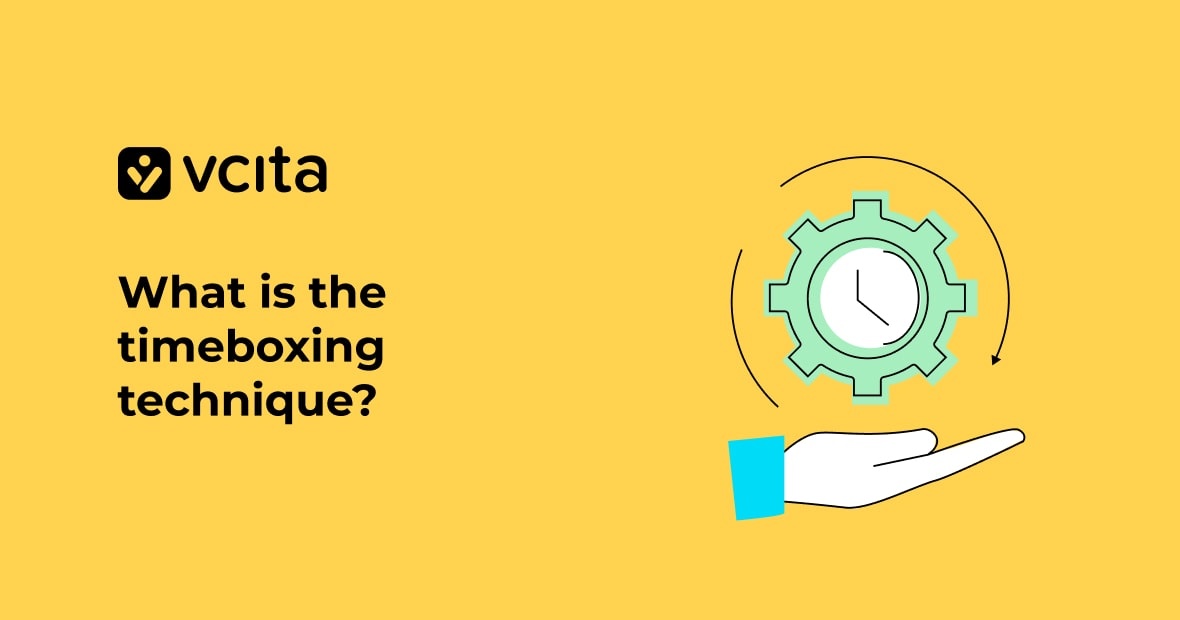You’ve got a ton of tasks to knock out today, but you feel like there’s just not enough time for you to fit it all in. We get it. That struggle with time management can affect us all. Fortunately, there’s a timeboxing technique that could be the time management method you’ve been looking for.
Read on to learn more about how to spend your time on the tasks that matter and get things done before the deadline.
What is timeboxing?
Timeboxing is a time management technique where you allocate a fixed period of time to work on important tasks. It’s based on the pomodoro technique of working for 25 minutes, then taking a short 5 minute break. With timeboxing, you set a strict time limit to finish smaller tasks, then take a quick break before moving on to the next timeboxed period.
This approach can be particularly beneficial in environments where measuring productivity is crucial, such as software development. According to Luxoft’s site, measuring developer productivity is complex due to the gap between executives’ need for metrics and developers’ resistance to being measured. Effective metrics should be objective and designed to encourage collaboration rather than competition among developers.
How to use the timeboxing time management technique
The timeboxing technique works by breaking bigger jobs down into smaller tasks, and allocating each a fixed period of time.
Allocate time for each task
To use timeboxing, first identify your high-priority tasks and break them into smaller jobs. Then allocate a fixed amount of time to work on each task before taking a break. The pomodoro technique uses 25-minute timeboxes, but you can choose a time frame that works for you, like 15, 30 or 60 minutes.
Alternate work time and break time
When your timebox begins, eliminate all distractions and focus solely on the task at hand. Work steadily without interruption until the timer goes off. Then take a short break to recharge before starting your next timebox. Increase the time limit for your timebox as you improve your focus.
This time management method helps you focus on one thing at a time and avoid distraction.
The benefits of timeboxing for productivity
The timeboxing technique provides several benefits for small business owners and entrepreneurs looking to improve productivity and time management.
Get more done in less time
By allocating a fixed time period to work on important tasks, you can focus your efforts and avoid distractions. Knowing you only have a limited time frame, like 15 minutes, makes you more focused and motivated to make the most of each timebox.
Avoid stress and overwhelm
Big projects can seem intimidating, so you put off getting started. Timeboxing allows you to break them down into smaller, more manageable chunks. You can set a timebox to work on one part of the project, take a short break, then start a new timebox to continue progress. This approach makes the work seem less daunting and helps build momentum.
Minimize time suckers
We all have activities that we can spend too much time on without realizing it – things like social media, web surfing, and email. Timeboxing these types of tasks gives you a strict limit so you can avoid going down the rabbit hole. Once your time is up, move on to something more productive.
Maintain focus and concentration
The short breaks in between timebox periods recharge your mind and body, so you can start the next timebox feeling focused and rejuvenated. Setting a timer for 15-25 minutes of work followed by a 5-minute break is a great approach. This way, you won’t risk getting burnout or worn out.
Adjust timeboxing to suit your needs
Although timeboxing suggests strict time limits, you can adapt them as needed. Shorter timeboxes of 15-30 minutes work well when you’re learning the technique, but you can then extend them to 45-60 minutes as you get more comfortable.
Build structure into your work life
The time limits you set for yourself help add routine and discipline to your time management. This can help avoid wasted time and keep you on track. With a more structured approach to work, you’ll be able to be more productive.
Tips for effective timeboxing
Using the timeboxing technique can help you manage your time better and accomplish important tasks. Here are some tips to make the most of timeboxing.
- Set a strict yet realistic time limit
Choose a fixed time period, like 15-30 minutes, to focus on a single task without interruptions. This time limit should be short enough to avoid distraction, but long enough to make progress. Start with a “soft” timebox, then make the limits stricter as you get used to the technique.
- Break down large tasks into smaller chunks
Break big projects down into smaller timeboxed tasks. For example, allocate 15 minutes to outline an article, 15 minutes to draft the intro, 15 minutes to draft each section. This approach makes the work seem more achievable.
- Take short breaks
It’s important to take short breaks in between timeboxes to recharge and renew your mental focus. Even taking just 2-3 minutes to step away from your work can help you feel rejuvenated for the next timebox. Use your break time wisely – stretch, hydrate or do some light exercise.
- Review and tweak your timeboxing technique
At the end of each timebox, evaluate what’s working and make any needed changes. For example, you may need to adjust time limits up or down or reprioritize your tasks for the next timebox. Timeboxing is a flexible time management method, so be willing to adapt it to your needs and work style.
- Remove distractions
Timeboxing only works if you’re disciplined about focusing for the allotted period of time, so find an environment conducive to concentration, turn off notifications on your devices, and let people know if you’re unavailable.
Timeboxing can transform your business management
Timeboxing does take practice to master. But stick with it, start slowly, and be flexible. Using the timeboxing method, you’ll find yourself accomplishing more of your important work in less time. And with regular short breaks built-in, you’ll avoid burnout and enjoy the benefits of increased productivity and time well spent.




























